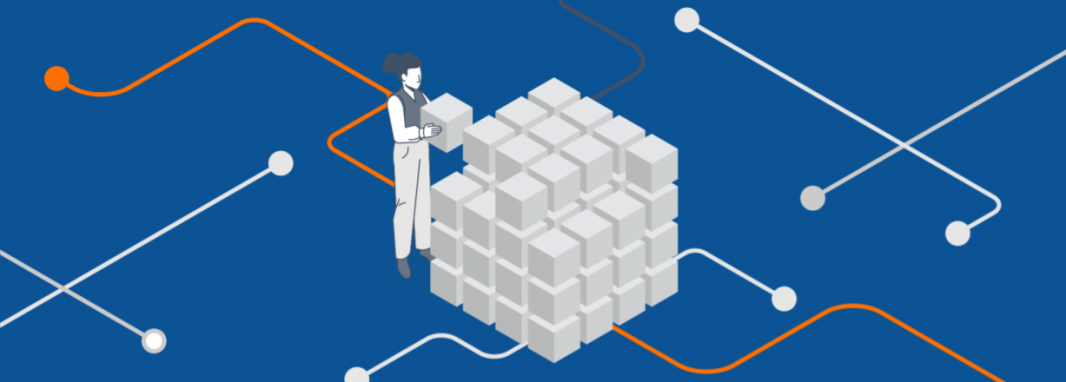Regarding machine learning, your model is only as good as the data it has access to. That’s what makes data preparation such an essential part of the puzzle.
If you don’t prepare the dataset correctly, it doesn’t matter how good your model is.
So what exactly is data preparation, and what are the issues with it?
And how can you prepare a dataset for a machine learning model? Well, we’re glad you asked. So let’s take a little look, shall we?
What is Data Preparation for Machine Learning, and What Issues Does It Have?
Data preparation is also often called data preprocessing. The idea is to take the raw data you’ve gathered and carry out some work on it to make it ready to be given to your machine-learning algorithms.
In the same way that crude oil needs to be refined to make gasoline before you can put it into a car, data needs to be refined before you can put it into your machine-learning model.
The challenge is that it’s not always a straight route, and several issues can come into play.
One of the biggest occurs when there are missing or incomplete records because your algorithm can’t process data if it isn’t there. It’s also surprisingly common because getting every data point for every record you store is hard.
Another issue can be outliers or anomalies. For example, let’s say that you have 1,000 records, and 999 are numbers between 1 and 10. If the other record is 338,348,394,473, that’s going to skew your averages beyond recognition.
Your data also needs to be formatted and structured correctly, and what this needs to look like can depend upon your model.
If you’re bringing data together from multiple sources, there’s a good chance that two or more sources have different standards, so you’ll need to process the data to make it consistent.
An example is that one source could list the country as “UK” while another has it as “United Kingdom.”
Data preparation is important because if you don’t take the time to make sure that your data is readable by your machine learning algorithm, it’s not going to be able to properly process it all.
That will then impact your results and reduce the efficacy of your model, and it can even skew the model so much that it ends up providing you with inaccurate or misleading outcomes.
When that happens, you’re better off not having a machine-learning model in the first place.
How to Prepare a Machine Learning Dataset in Seven Steps?
Now that we’ve covered what data preparation is and a few of the issues that you might face along the way, it’s time for us to share a few steps that you can follow that will help you to prepare your dataset ready for your machine learning model to start processing it.
Step 1: Problem Formulation
In machine learning circles, the problem formulation is the process of deciding what the model is going to try to predict.
For example, Netflix’s algorithm’s problem is how to maximize watch time by ensuring that people see content suggestions that are tailored to their viewing patterns and interests.
Simply put, you can’t build a model if you don’t know what you want the model to achieve.
There can often be multiple different ways to define the same problem, and the approach that you choose to take will depend upon your business requirements and have an impact on the results that you receive.
When formulating the problem, it’s generally best to follow the KISS model – keep it simple and stupid. In other words, you’ll need to create the simplest solution there is to your problem so that your machine learning model has the best chance of success.
At the same time, you also need to ensure that you don’t discard data or information that you might need at a later date.
Step 2: Gathering Data
Now that you’ve formulated the problem, you’re ready to start gathering data. There are a number of different ways you can go about this.
For instance, you can gather your own data through something like a marketing automation tool, or you can tap into APIs and firehoses of third-party data from social networks and other platforms.
You also need to understand the difference between implicit and explicit data. Implicit data is data that’s inferred based on people’s behavior, such as from the pages they visit and the content they consume.
Explicit data is data that people explicitly provide about themselves, such as when you ask them for their communication preferences or data points like their names and dates of birth.
Once you know the kinds of data that you want to gather, as well as the sources from which you’ll gather them, the next step is to determine which data integration methods you want to use.
There are two main choices for you to consider here.
ELT: Extract, Load, Transform
This approach relies on extracting the data from its source before loading it straight into the target system, which in this case would be your machine learning model.
Of course, the data still needs to be prepared before the model can use it, and so the unstructured data is then transformed within the model before being processed.
ELT tends to be faster than ATL, but it’s also more likely to leave you with compromised data that your algorithm can’t process.
ETL: Extract, Transform, Load
The ETL approach is similar to ETL except that it extracts the data and then prepares it for its delivery to the model before moving on to loading the data.
This often uses a staging area, a concept that will be similar to those who’ve worked in web development, in which a demo of the live model is used to test the transformed data before it’s sent to the real thing.
It’s the safest approach but takes the most time, so bear that in mind if time is of the essence.
Step 3: Categorizing Data
Once you’ve gathered your data and decided upon the model that you’re going to use, you’re ready to start categorizing your data.
As always, the idea here is to get it ready for your model to be able to understand it, and categorizing your data can act as a handy little shortcut and even make the difference between your model is a success or a flop.
Here are a few of the main concepts that you need to know about when it comes to categorizing your data.
Classification
Classification is all about sorting data into different groups. For example, if you’re creating a model that’s designed to process photos of animals and to identify which animals they are, you might classify your data into buckets for cat photos, dog photos, and bird photos.
When you eventually provide the data to the algorithm, it will then be able to look for similarities between all of the photos in any given category and to look for commonalities.
In other words, it would learn what a cat looks like in the same way that we do – by looking at a bunch of cats.
Clustering
Clustering aims to group data based on similar attributes. It’s similar to classification, except that you generally don’t explicitly label things.
With machine learning models, it’s often too difficult for a human being to identify which labels are going to be useful, and so clustering aims to bypass that by bringing together records that have some sort of common identifier.
So, building upon the previous example, all of those animal photos could be clustered based on whether they were taken inside or outside or whether they were landscape or portrait.
Regression
Regression is used when an image can fit into multiple categories. It’s a form of statistical analysis that requires labeled input and output data during training so that the model can understand the difference between features and outcome variables.
It’s particularly common when the machine learning model is being used to power key decisions within a company, especially when the company is in a regulated industry like healthcare or finance.
Technically, regression is part of the model’s actual application rather than something that happens during preparation.
However, proper preparation is vital if you want regression to work at a later date because the training data needs to be of the highest standard possible.
Ranking
Ranking is exactly what it sounds like – ranking your data before you hand it over to the algorithm.
This could be ranking in terms of the order in which you want the model to process it, or it could mean ranking them in order of how important it is for the machine to generate results for them.
In fact, there are as many different ways to rank data as you can think of, meaning the sky’s the limit.
Step 4: Preprocessing Data
Now that you’ve categorized the data, the next step is to begin preprocessing it. As the name suggests, preprocessing is the processing that takes place before the model processes the data properly, and it has several goals that mostly revolve around making the data as ready as possible for it to be loaded into your model.
There are several important steps for you to think about when it comes to preprocessing data.
Checking data quality
If you want your machine learning model to provide you with genuinely useful outcomes, you need to take the time to check the quality of your data at this point to see whether the previous processing steps have gone as smoothly as you hoped.
This step is also about looking ahead and identifying what work needs to be done in the following two steps because there’s no need for you to format the data if the data is already formatted.
Formatting data
Formatting the data is about making it as easily read as possible. For example, you may want to make sure that all of the times and dates are using a consistent format, rather than having some times in the 12-hour clock and some that use the 24-hour clock. Formatting your data will help to ensure that all of the data that goes into your model is consistent and will avoid accidentally skewing results by allowing the model to process inconsistent data.
Reducing and cleaning redundant data
The final step of preprocessing is to work your way through the data that you have and to clean it up by getting rid of any data that’s unnecessary.
This can mean getting rid of data that you’re not planning on using, perhaps irrelevant information such as the book that your customers were reading when they entered your sweepstakes.
It can also mean pruning duplicates, so if you have the time in both 12-hour and 24-hour formats, you’ll only need one of them.
Step 5: Transforming Data
With the data preprocessed, you’re ready to start thinking about transforming it. This is really the final step in making sure that the data is as ready as possible for your model to start working with it.
There are three main steps to this process.
Scaling
Scaling is a little bit like formatting except that it deals specifically with converting between different scales. For example, if you have a field that measures weight, it could contain measurements in pounds, ounces, grams, stones, and kilograms.
Scaling is all about making sure that all of these measurements are in the same measurement format and then creating a scale from the smallest figure to the largest so that the model knows the parameters that it’s working within.
Decomposition
Decomposition occurs when you take a more complex field and break it out into its constituent parts. For example, if a field contains both a date and a time, you could split those out into separate fields using decomposition.
You could do the same with an address field to split it out into the first line, second line, city, state, and zip code. It’s all about ensuring the machine-learning model can process the data as accurately as possible.
Aggregation
Aggregation is all about bringing multiple fields together into a single field to make it easier and more efficient for the algorithm to process it. For example, you might have tracked every time that one of your sales prospects has opened an email from you. Aggregation would allow you to group all of those opens to create a single count of how many times they’ve opened emails.
Step 6: Feature Development and Selection
By this point, all of your data is ready for processing, so it’s time for you to start building your model.
This begins by selecting the features you want to include, which normally tracks back to the first step in our list, that of problem formulation.
The features that you develop need to relate back to the problem formulation and be designed to help to solve those problems.
Once you’ve selected those features, you then need to develop them so that they become a part of your final model.
Be sure to test as you go by feeding some of your data into your model and seeing whether it’s able to process it and, if so, whether it’s able to generate tangible results that your business can use out in the real world.
Once you’ve selected and developed your features, you’re pretty much ready to launch. There’s just one more step for you to think about.
Step 7: Splitting the Data into ML Model Training
This final step is the one that you’ve been working towards throughout the rest of this blog post. Now that all of your data has been prepared, categorized, preprocessed, and transformed, you’re ready to import it into your model.
There are different ways that you can go about this.
Some developers like to import all of the data and then hit the metaphorical go button, while others prefer to add it bit by bit to make sure that the model isn’t going to crash under the weight of it all.
This step is particularly interesting because it typically calls for developers and data analysts to work closely together during the rollout and in the weeks immediately following it as the model starts to deliver its insights.
And don’t think that the hard work is over just because you’ve launched your model.
You’ll still want to keep making tweaks and changes as time progresses, and the best way to do that is to measure the results and hold them up against your problem formulation. If you’re not making progress toward solving the problem, it’s time to go back to the drawing board.
Final Words on Dataset Preparation
Now that you know the fundamentals of preparing a machine learning dataset, you’re ready to get started.
Remember that the best model in the world won’t be useful if your data isn’t any good, and don’t forget the old saying: if you fail to prepare, you prepare to fail.
Of course, even once you’ve prepared all of your data, you still need to build a model to process it.
You can either do that in-house if you have the talent available to you, or you can outsource it to an agency or a freelancer.
Most teams that work on machine learning models also have the capability to help you out with your data preparation, so don’t be afraid to ask if you need help.
It’s better to admit that you need support than to try to go it alone and make a mess of things.
And, of course, if you’re on the lookout for a partner that can help you to prepare your data and build a machine-learning model, you’ve come to the right place.
Here at Zfort Group, we have plenty of experience in helping companies just like yours get started with machine learning. Reach out to us today to find out more!






